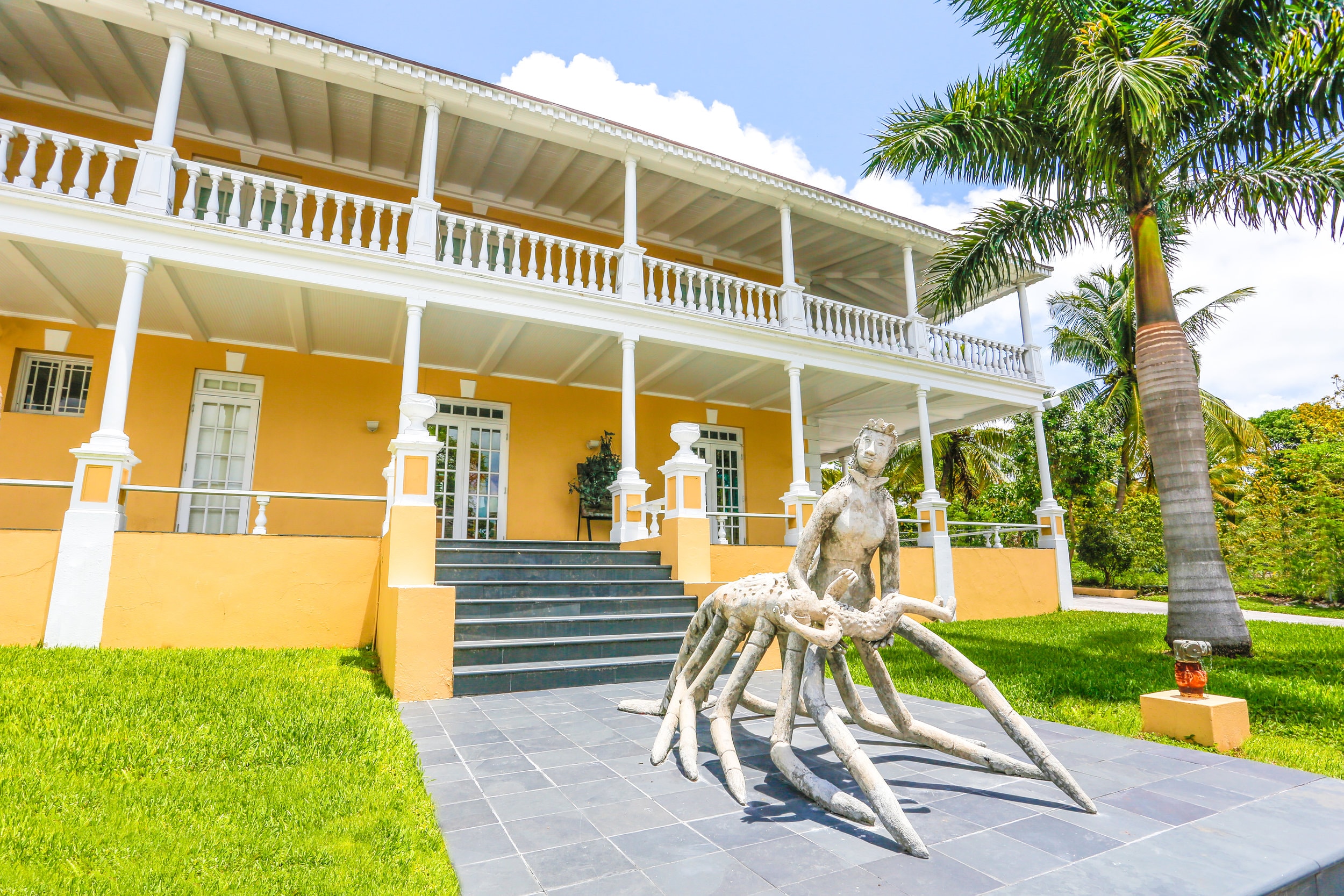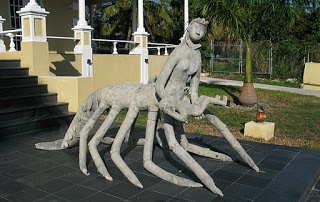By Natalie Willis. Metal is a tricky medium. It’s industrial, ceremonial, it can be strong enough to build bridges or soft enough that your very teeth could dent it. For Tyrone Ferguson, he doesn’t seem to find these traits something to work against, rather he works with his medium intuitively, sensitively, and brings some spirit back into metalwork and blacksmithing.
All posts tagged: Sculpture
To Heal We Must Remember: Katrina Cartwright’s power figure uproots the past
By Letitia Pratt. It is a hopeful mission of the African diasporas to heal the ancestral pain that Black peoples have inherited. This healing will only come to us in the process of remembering. One of the primary ways to initiate this process is through the creation and consumption of art, which invites us to remember the past, take stock of the present, and come to terms with the complex histories that influence our current experiences as Black people. This process is especially needed for Black Bahamians, whose past traumas shape how we view ourselves. It is incumbent on our ability to tell truths about our past: we must recall times of slave rebellions, punishments, uprisings and revolts. We must remember the slaves that escaped the tyranny of Lord Rolle of Exuma – only to be recaptured and severely punished – and remember the tragedy of Poor Kate of Crooked Island who died from torture in the stocks for seventeen days. (The Morning Chronicle, 1929). It is these stories we need to remember. These are the stories that shaped our ancestors. These are the traumas we need to heal from. Katrina Cartwright’s Nkisi/Nkondi Figure: Prejudice is the Theory, Discrimination is the Practice, (2012) does just that: It forces us to remember, and it inspires us to heal.
From the Collection: “Crawfish Lady” (c2000) by Wellington Bridgewater
By Natalie Willis
What does Bahamian fantasy and myth look like? What magic or horror happens when the divides between animal and human seem to dissolve? What then must Wellington Bridgewater have been thinking when he made the “Crawfish Woman” (c2000) who lies on the Southern steps of the NAGB’s Villa Doyle. Was he thinking that this lobster-lady was like the nefarious lusca, sucking water in and out of blue holes to capture unlucky divers and boats with the power of the oceans. Or was she more like the chickcharney, a generally benign beast who, once wronged, would cause you harm.
Kendra Frorup’s ‘Domestic Chickens’
Kendra Frorup’s ‘Domestic Chickens’ (2007) installation is one of the lesser-known pieces in the National Collection. The 2017-2018 Permanent Exhibition, ‘Revisiting An Eye For The Tropics’, is a departure point for us to look to the way the past has informed the present aesthetic in Bahamian artwork, and also importantly to showcase the works in the National Collection and remind us of what we have ownership and pride over as Bahamians.




